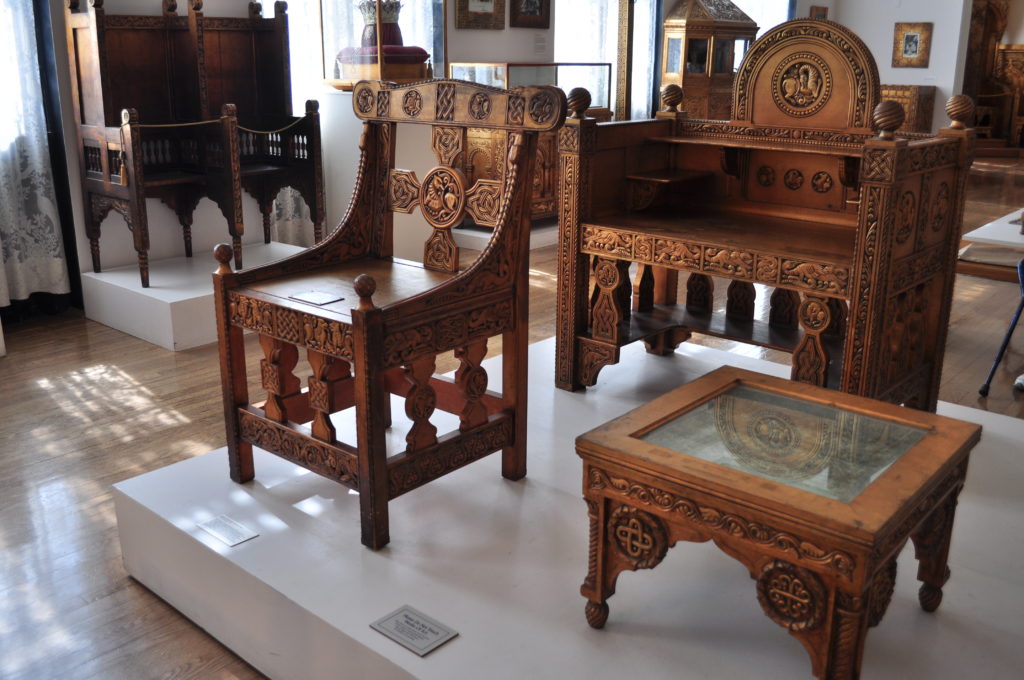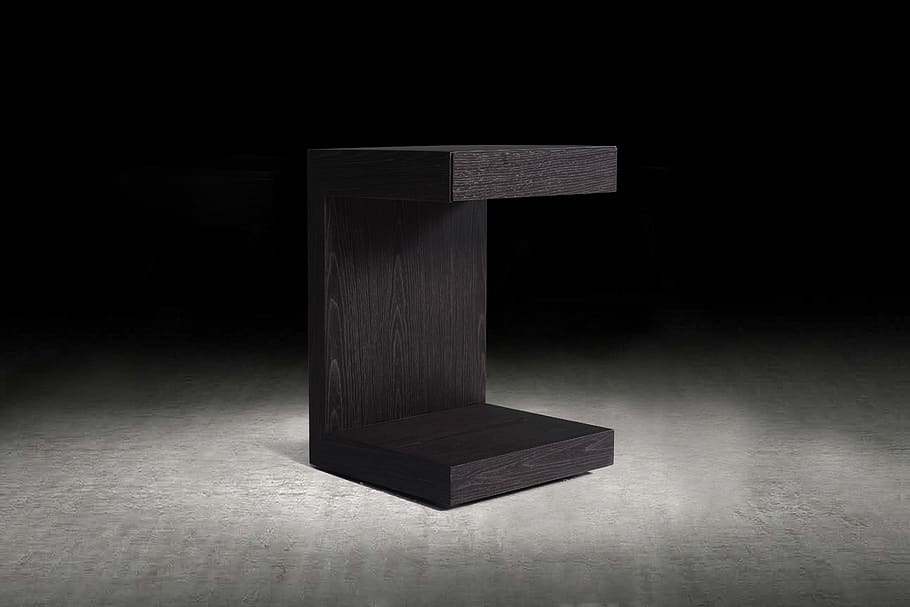Today, wooden furniture can be found all around. Most of the space occupied in the interior decoration of a house is by furniture. The furniture is not only a comfortable object in the house but also a symbol of a modern house full of peace. So It is very important to be familiar with the principles of wooden furniture design.
History of wooden furniture design
The design and use of furniture have historical antiquity that has been discovered in historical monuments and paintings of the Neolithic period. Knowing the history and evolution of wooden furniture design can give us a better view. Many design principles are rooted in history, and a furniture designer should be familiar with them. So let’s start with the history of wooden furniture design.
The Design of Medieval Furniture
Due to the lack of wood, the stone was used at that time to make home appliances such as wardrobes, beds, stone benches, and so on. Evidence of furniture can also be seen in the sculptures and excavations of the Egyptian pyramids.
In ancient Roman times, furniture design was influenced by Egyptian furniture design, which has had a rectangular and rough design. The most important furniture sofa for this period is the Klismos chair. Medieval furniture, like this period, was very dry and cold, and wooden furniture in gray was used in the furniture of this period.
The Form and Design of Medieval Furniture

The form of the medieval furniture was often square and rectangular, with some small curves. The Renaissance was the beginning of a new era in design, inspired by ancient Egyptian and Roman periods.
The Renaissance period was a fervent period of European cultural, artistic, political, and economic “rebirth” following the middle ages. In the history of wooden furniture design, the Renaissance was the period of using gilding like designs where they were full of floral and plant motifs, the purpose of which is to show the ability of artists.
Wooden Furniture Design after the Industrial Revolution
With the Industrial Revolution in the 19th century, the population of workers in cities increased, creating a new class of furniture buyers. The Industrial Revolution led to the mass production of products, new and unique designs, and the advancement of past furniture styles, known as the Age of Enlightenment. In later periods, Art Nouveau furniture (late 19th century), Bauhaus furniture (20th century), and Art Deco furniture came with it.
Lichtenberg Wood Burning eBook

Download Lichtenberg Wood Burning eBook
One of the modern techniques for creating wooden artwork is called Lichtenberg wood Burning. In this eBook, we are going to introduce this newfound art to you.
This technique is known with some different names such as Lichtenberg wood burning, fractal wood burning, and electricity wood art.
This technique should not be confused with wood burning art or pyrography. The art of pyrography on wood is the art of creating motifs and designs by burning with hot metal tools on objects such as wooden surfaces.
Lichtenberg burning is a wood-burning technique for creating designs with electricity.
This eBook is a comprehensive guide on Lichtenberg Wood Burning. All you need to know for Lichtenberg Wood Burning is here.
This is a limited-time offer, order now to get access to the future eBook releases.
After all these, modern styles and the furniture used today were designed. Modern furniture after World War II was created with new and expanded materials such as plywood, fiberglass, and plastics. Features of modern style are simplicity of design, use of simple fabrics, lack of embossing, and use of new materials such as metal.
Important Principles of Modern Wooden Furniture Design

In furniture design, designers pay less attention to engineering and scientific issues and are more interested in beauty and stylish and customer-friendly designs. One of the reasons for this is the lack of awareness of designers about the minimum weight of materials used and its safety. It has no result other than poor-quality furniture because of a lack of sufficient information and research on furniture structures and lack of professionalism of designers.
It is also worth mentioning that these issues are not taken into account by the customer, and the standard for judging the sofa is the price and reputation of the wooden furniture manufacturer.
Of course, this mindset is completely wrong because the manufacturer can make a structure from both walnut and pine wood, which are very expensive, so the price is certainly not a good criterion for judging.
Despite the engineering design, the manufacturer produces furniture at different prices and the buyer buys according to his needs.
Here are three important principles in the design of wooden furniture.
The First Principle: Strength

The first principle in furniture design is the strength factor. A chair or sofa should be able to support the weight of a heavy person. The designer of wooden furniture should know the types of wood and be familiar with engineering science. The strength of wood is very important, but there are many tips on this. For more information on this topic, we suggest you see “The hardest woods in the world“.
In addition to choosing the right wood, the principles of engineering design play a big role in the strength of wooden furniture. We refer to these principles here.
Engineering Principles of Wood Furniture Design
The next feature is the design of furniture engineering. The purpose of engineering design is to design the structure in such a way that it has the necessary resistance to the loads. In the engineering design of wooden furniture design, the following points should be observed:
- Use the right connections, depending on the amount of load and the uses of furniture
- Analysis of internal forces
- Calculate the design to prevent stress on the wood
Calculate the load
The first step in design engineering is to calculate the load on a furniture structure that must be tolerated. Furniture designer plays an important role in the construction of the structure and should be fully familiar with static rules.
After calculating the load, the design of the furniture should be based on the forces applied to the wood.
Here the designer needs to be familiar with the scales of measuring the hardness and elasticity of wood.
In general, there are four scales of wood hardness that you should be familiar with. These four scales are:
Click on each of these four scales to get acquainted with them.
The Second Principle: Beauty, Comfort, and Efficiency

In designing furniture, many points must be observed, the 3 important features of which are the beauty of the structure, comfort, and efficiency. In addition to daily use, furniture increases the beauty of the house and complements the decoration of the house, so the buyer pays close attention to the beauty and appearance of the furniture. The next point is the efficiency of wood furniture.
The design of the furniture should be such that it has a suitable performance in the home or work environment and the consumer can use it in complete peace and comfort.
Ergonomic Principles for Furniture Designing

As mentioned above, a wooden furniture designer plays an important role in the construction of the structure and should be fully acquainted with the ergonomic and static rules, ie the furniture should be made in such a way that it does not harm the consumer’s body if used for a long time. Among the points that should be considered in the discussion of ergonomics, we can mention the width of the seat, the height of the furniture, the height of the back of the furniture, the appropriate insole, the appropriate handle, the material of the procedure, and so on.
For more information see Ergonomics Issues in Furniture Design.
Conclusion
In this article, we have tried to explain the basic principles of wood furniture design and draw the design path of modern furniture. Analyzing a furniture structure is very complicated and difficult because a furniture structure is made up of many connections and often deform non-linearly under loads.
On the other hand, the geometric shape of the furniture is such that it cannot be drawn linearly and must be three-dimensional. Today, with the advancement of technology using computers and analytics software, the analysis of furniture structures has become more easy and possible, and manual calculations have been abandoned.






